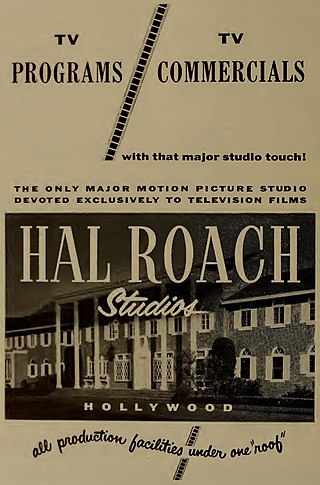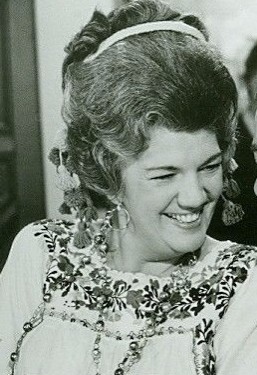
David Wark Griffith was an American film director. Considered one of the most influential figures in the history of the motion picture, he pioneered many aspects of film editing and expanded the art of the narrative film.

Laurel and Hardy were a British-American comedy duo act during the early Classical Hollywood era of American cinema, consisting of Englishman Stan Laurel (1890–1965) and American Oliver Hardy (1892–1957). Starting their career as a duo in the silent film era, they later successfully transitioned to "talkies". From the late 1920s to the mid-1950s, they were internationally famous for their slapstick comedy, with Laurel playing the clumsy, childlike friend to Hardy's pompous bully. Their signature theme song, known as "The Cuckoo Song", "Ku-Ku", or "The Dance of the Cuckoos" was heard over their films' opening credits, and became as emblematic of them as their bowler hats.

Culver City is a city in Los Angeles County, California, United States. As of the 2020 census, the population was 40,779.

Zorro is a fictional character created in 1919 by American pulp writer Johnston McCulley, appearing in works set in the Pueblo of Los Angeles in Alta California. He is typically portrayed as a dashing masked vigilante who defends the commoners and indigenous peoples of California against corrupt and tyrannical officials and other villains. His signature all-black costume includes a cape, a hat known as a sombrero cordobés, and a mask covering the upper half of his face.

Harold Clayton Lloyd, Sr. was an American actor, comedian, and stunt performer who appeared in many silent comedy films.

Harold Eugene "Hal" Roach Sr. was an American film and television producer, director, screenwriter, and centenarian, who was the founder of the namesake Hal Roach Studios.

Charles Joseph Parrott, known professionally as Charley Chase, was an American comedian, actor, screenwriter and film director. He worked for many pioneering comedy studios but is chiefly associated with producer Hal Roach. Chase was the elder brother of comedian/director James Parrott.

Phyllis Virginia "Bebe" Daniels was an American actress, singer, dancer, writer, and producer.

José Ramón Gil Samaniego, known professionally as Ramon Novarro, was a Mexican-American actor. He began his career in silent films in 1917 and eventually became a leading man and one of the top box-office attractions of the 1920s and early 1930s. Novarro was promoted by MGM as a "Latin lover" and became known as a sex symbol after the death of Rudolph Valentino. He is recognized as the first Latin American actor to succeed in Hollywood.

The Mark of Zorro is a 1920 American silent Western romance film starring Douglas Fairbanks and Noah Beery. This genre-defining swashbuckler adventure was the first movie version of The Mark of Zorro. Based on the 1919 story The Curse of Capistrano by Johnston McCulley, which introduced the masked hero, Zorro, the screenplay was adapted by Fairbanks and Eugene Miller.

Hal Roach Studios was an American motion picture and television production studio. Known as The Laugh Factory to the World, it was founded by producer Hal Roach and business partners Dan Linthicum and I.H. Nance as the Rolin Film Company on July 23, 1914. The studio lot, at 8822 Washington Boulevard in Culver City, California, United States, was built in 1920, at which time Rolin was renamed to Hal E. Roach Studios. The first series in Hal Roach Studios were the Willie Work comedies, with first short being A Duke For A Day.

The Squaw Man is a 1914 American silent Western film directed by Cecil B. DeMille and Oscar C. Apfel, and starring Dustin Farnum. It was DeMille's directorial debut and one of the first feature films to be shot in what is now Hollywood.

Max Davidson was a German-American film actor known for his comedic Jewish persona during the silent film era. With a career spanning over thirty years, Davidson appeared in over 180 films.

Norman Foster was an American film director, screenwriter and actor. He directed many Charlie Chan and Mr. Moto films as well as projects for Orson Welles and Walt Disney. As an actor he was a leading man in early talkies and also appeared in Welles' final film, The Other Side of the Wind.

Rodolfo Pérez Acosta was a Mexican-American character actor who became known for his roles as Mexican outlaws or American Indians in Hollywood western films. He was sometimes credited as Rudolfo Acosta.

Carmen Margarita Zapata often referred to as "The First Lady of the Hispanic Theater" was an American actress best known for her role in the PBS bilingual children's program Villa Alegre. Zapata is also the co-founder and director of the Bilingual Foundation of the Arts in Los Angeles. Zapata took an active part in the Chicano movement of the 1960s and 1970s. Zapata was born in New York City to Julio Zapata, a Mexican immigrant, and Ramona Roca, an Argentine immigrant.

Eugene William Pallette was an American actor who worked in both the silent and sound eras, performing in more than 240 productions between 1913 and 1946.
The Stu Erwin Show is an American sitcom which aired on ABC from 1950 to 1955. Only four of the series’ five seasons on the network included new episodes; the 1953–54 season consisted entirely of reruns.

Peggy Lenore Ahearn Blaylock, known professionally as Peggy Ahern, was an American actress best known for her appearance in eight of the Our Gang series of films released between 1924 and 1927. The Our Gang series, which was also known as The Little Rascals or Hal Roach's Rascals, was a series of comedic, short silent films created by director and producer Hal Roach. Ahern was one of the last surviving cast members from a Hal Roach film.

Harry Burns was a vaudeville performer, boxing referee, actor, assistant director, animal-picture director and producer, and Hollywood magazine publisher. Burns was married to the actress Dorothy Vernon; the silent-film slapstick comedy star Bobby Vernon was his stepson.


















